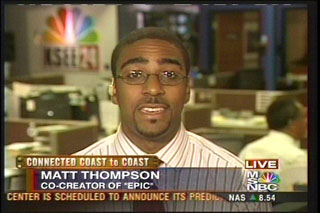
I have a reflexive dislike of the suburbs. I grew up in Orlando, in one of its suburbs stacked on suburbs, all in distant orbit around a tiny center of faux-urbanity we called downtown. (Which in turn hovered in distant orbit around a giant center of faux-reality we called Disney World.)
Orlando feels horribly lifeless to me. I often say that in Orlando, you have to drive 20 minutes to get to the convenience store. I can’t think of a single good Mom-and-Pop shop around where I grew up. When I go back to visit, there are no places where my friends and I can sit idly and chat until the wee hours. For a while, we seriously took to frequenting the lobbies of the nicer hotels.
When I was a sophomore away in college, my parents suddenly moved away from the house I’d lived in since 4th grade. To this day, I haven’t even gone back to see what the house looks like. I have tons of memories of that time in my life, but the house, lifeless and suburban, figures in none of them. Meanwhile, my grandmother’s house in Chicago, where I spent only a week each year until my late teens, is a living place brimming with unforgettable corners.
 So it feels instinctively right to me when I hear James Howard Kunstler describe suburbs as resource-sucking parasites, or when I read essays like David Owen’s magnificent “Green Manhattan” (about how super-urbs like Manhattan “offer one of the few plausible remedies for some of the world’s most discouraging environmental ills”) and Michael Pollan’s equally magnificent “Why Mow?” (about how the once-democratic suburban lawn has become a symbol of near-totalitarian conformity).
So it feels instinctively right to me when I hear James Howard Kunstler describe suburbs as resource-sucking parasites, or when I read essays like David Owen’s magnificent “Green Manhattan” (about how super-urbs like Manhattan “offer one of the few plausible remedies for some of the world’s most discouraging environmental ills”) and Michael Pollan’s equally magnificent “Why Mow?” (about how the once-democratic suburban lawn has become a symbol of near-totalitarian conformity).
How could anyone choose a suburb over a city? I ask myself. Cities engender creativity and comity and efficiency. The Renaissance could never have taken place in a suburbanized Europe.
But I occasionally get jolted out of my city-worship when I encounter a bit of reality like this post by Terrance at the Republic of T:
Education is something that’s important to both the hubby and me, and without question we want our kids to have the best shot we can give them in that department; just like a lot of other parents. For us, that either means private schools in D.C. or public schools in the suburbs. Private schools in D.C. are more than we can afford for two kids. So, we’ve sold our house we’re moving to a new house in Chevy Chase, MD, that’s in the process of being built. (Just this week, we noted that Parker’s future high school made Newsweek’s list of the 100 best high schools in America. Let’s hope it stays that way.) In the meantime, we’re moving into a townhouse in Maryland until the new house is finished, later this year.
Another issue for us, that the article touches on, is space. You may have to understand the general layouts of D.C. Victorian townhouses, or even have seen our house to understand why the space doesn’t work as well for us as another space might. You could start with the family room on the second floor and the kitchen on the first floor (you wouldn’t believe how many trips up and down the stairs this involves – many with an infant/toddler while juggling dinner/lunch), segue with the lack of room to grow, and finish off with the cost of more space – in the city. It’s pretty much like the article says.
It’s also another step on a journey that started the moment we – a couple of urban-dwelling gay men – committed to becoming parents.
The article Terrance refers to is this piece from The New York Times, headlined “Vibrant Cities Find One Thing Missing: Children.” The article goes into some of the intractible, real-world problems that drag perfectly sensible people into the suburban cookie-cutter.
Dig a little deeper into that Kunstler interview, and you find that while he hates suburbs, he’s not all that keen on super-urbs, either:
The huge suburban metroplexes like New York and Chicago are not going to function very well. They’re products of the oil age. They are oversupplied with skyscrapers and mega-structures that have poor prospects in a society with scarce energy. We will see a painful contraction in these places.
And even city-lover David Owen describes Manhattan this way:
Manhattan is loud and dirty, and the subway is depressing, and the fumes from the cars and cabs and buses can make people sick. Presumably for environmental reasons, New York City has one of the highest childhood-asthma rates in the country, with an especially alarming concentration in East Harlem.
I only have to remember how stressed I could get trying to pay the bills in my beloved, bustling Boston to realize that cities aren’t exactly utopias. So if suburbs are unsustainable, but cities are hemorrhaging families, where do we end up?
PS: I only mentioned them briefly, but both of the essays I linked above are very good. Highly worth checking out. See Short Schrift for more on “Green Manhattan.”
“Why Mow?” is shrewd social commentary at its best: “Lawns are nature purged of sex and death. No wonder Americans love them so much.”
Also see WorldChanging for more on all this.


 So it feels instinctively right to me when I hear James Howard Kunstler
So it feels instinctively right to me when I hear James Howard Kunstler 